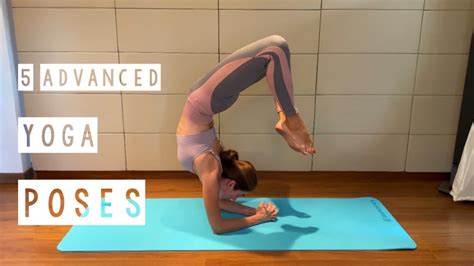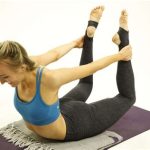Mastering Advanced Yoga Asanas: A Seven-Step Comprehensive Guide
Yoga, a holistic practice that has been evolving for thousands of years, challenges both body and mind. For practitioners looking to advance beyond basic postures, this journey into advanced asanas represents a deeper connection to yoga’s true essence. These postures, when done correctly, enhance strength, flexibility, and mental discipline. But they also require proper preparation, guidance, and persistence. In this guide, we break down the complex process of mastering advanced yoga asanas into seven critical steps, offering actionable insights that balance theoretical understanding with practical applications.
Introduction
Advancing in yoga is much more than just physical prowess. While mastering advanced poses, like Handstand (Adho Mukha Vrksasana) or Scorpion Pose (Vrschikasana), is visually impressive, the true journey lies in achieving a profound union of body, mind, and breath. The following guide is structured to help you conquer advanced yoga asanas by providing a multi-faceted approach, considering not only the physical but also the mental and spiritual challenges. This article covers key techniques, precautions, and personalized paths to ensure a successful practice.
Key Concepts
- Alignment: Correct alignment is critical in advanced poses to prevent injury and optimize the physical benefits.
- Strength and Flexibility: Building adequate strength and flexibility through preparatory exercises is fundamental.
- Breath Control: Mastery of pranayama (breathing techniques) is key for maintaining stability and calmness in difficult poses.
- Mental Focus: Advanced yoga requires a deep focus to balance complex postures and connect with deeper layers of awareness.
Historical Context
The journey of yoga asanas has evolved significantly over centuries. The concept of yoga postures as we understand them today only became a significant part of yoga around the Middle Ages with texts like the Hatha Yoga Pradipika (15th century). While early yoga practices were more meditative and seated, modern yoga, especially postures like King Pigeon Pose (Kapotasana) or Eight-Angle Pose (Astavakrasana), focus on body movement and its relationship with breath.
Modern yoga owes much of its popularity to influential figures like Tirumalai Krishnamacharya, whose teachings spread across the globe. By connecting ancient yogic wisdom with contemporary methods, today’s practitioners can tap into a blend of spiritual tradition and physical fitness.
Current State Analysis
In the current yoga landscape, there is an increasing demand for advanced asanas. Yoga influencers, social media, and global yoga trends encourage practitioners to showcase their mastery of intricate poses. However, the pursuit of perfection in asanas without proper preparation can lead to injuries, burnout, and a disconnect from the philosophical roots of yoga.
Many yoga schools, both traditional and modern, emphasize the importance of a slow, step-by-step approach to advanced postures, integrating them into a balanced practice. Instructors advocate for progressive strength building, flexibility, and body awareness before attempting advanced poses.
Practical Applications
Mastering advanced yoga asanas requires structured training and mindful progression. The following seven steps break down the process into manageable stages:
1. Establish a Strong Foundation
Advanced asanas require solid foundational skills. Practitioners must first excel in basic postures like Downward Dog (Adho Mukha Svanasana) and Warrior I (Virabhadrasana I) to ensure strength, alignment, and flexibility. Core strength is particularly important, as it stabilizes many of the advanced poses.
2. Build Flexibility Through Consistent Stretching
Stretching is essential, especially for postures that require extreme flexibility like Full Wheel (Urdhva Dhanurasana) or Leg-Behind-the-Head Pose (Eka Pada Sirsasana). Engage in dynamic and static stretches that target the hamstrings, hips, and shoulders.
3. Develop Core and Arm Strength
Many advanced asanas like Handstand and Peacock Pose (Mayurasana) require strong arm and core muscles. Incorporate strengthening exercises such as plank variations, arm balances, and inversions to gradually build the necessary power.
4. Master Breath Control (Pranayama)
Breathing techniques are essential to maintaining control in challenging poses. Learn and practice Ujjayi Breath to improve endurance, focus, and overall balance in advanced asanas.
5. Cultivate Mental Focus Through Meditation
Advanced poses require intense concentration. A regular meditation practice improves mental clarity and focus, helping practitioners maintain their equilibrium during difficult transitions and balances.
6. Incorporate Progressive Training
Yoga sequences should progress logically, with preparatory poses leading into more complex asanas. For instance, before attempting Scorpion Pose, one must first be comfortable in Forearm Stand (Pincha Mayurasana).
7. Seek Guidance and Support
Advanced yoga should not be attempted without proper instruction. Engaging with experienced teachers or trainers ensures that you receive personalized feedback and avoid injury.
Case Studies
| Advanced Asana | Common Challenges | Proposed Solutions |
|---|---|---|
| Handstand (Adho Mukha Vrksasana) | Fear of falling, lack of wrist strength | Wall support for stability, wrist-strengthening exercises |
| Full Wheel (Urdhva Dhanurasana) | Limited shoulder flexibility | Shoulder-opening poses like Bridge Pose (Setu Bandhasana) |
| King Pigeon Pose (Kapotasana) | Hip tightness, lower back strain | Long holds in Pigeon Pose (Eka Pada Rajakapotasana) with props |
| Scorpion Pose (Vrschikasana) | Lack of core strength, balance issues | Develop core through leg lifts, improve balance with Dolphin Pose |
| Peacock Pose (Mayurasana) | Poor wrist flexibility, lack of arm strength | Wrist warm-ups, plank holds for arm strength |
Stakeholder Analysis
Stakeholders in the progression of yoga practice include practitioners, instructors, medical professionals, and even cultural advocates. Practitioners seek physical and mental wellness, while instructors are responsible for guiding them safely through advanced poses. Medical professionals may offer insight on preventing injuries and understanding limitations, while cultural advocates stress the importance of maintaining yoga’s spiritual and philosophical roots amidst its growing popularity.
Implementation Guidelines
- Set Clear Goals: Break down advanced asanas into small, measurable goals to track progress.
- Regular Practice: Consistency is key. Regularly practicing preparatory postures accelerates progress.
- Rest and Recovery: Allow for rest days to avoid injury and ensure muscles have time to recover.
- Mindful Progression: Don’t rush through stages. Each stage of the journey requires patience and dedication.
- Use Props: Yoga blocks, straps, and bolsters can be invaluable for modifying poses to suit your flexibility and strength level.
Ethical Considerations
In today’s fast-paced yoga community, there’s a risk of focusing too much on the physical aspect of yoga, sidelining its spiritual and ethical underpinnings. Advanced asana practice should always remain grounded in the yamas and niyamas, yoga’s ethical guidelines. Additionally, it’s crucial to respect your body’s limits and avoid pushing yourself into poses just for the sake of aesthetics or external validation. Remember, yoga is about union and balance—forcing your body into advanced asanas can have counterproductive consequences if done irresponsibly.
Limitations and Future Research
Though this guide provides a comprehensive pathway to mastering advanced asanas, it is crucial to recognize that each practitioner is unique. Genetic factors, physical history, and mental disposition can significantly influence one’s ability to perform certain poses. As such, future research could explore how individual body types, ages, and health conditions can be factored into personalized yoga programs. Additionally, while the focus is on the physical aspects of yoga here, further exploration into the psychological and spiritual effects of mastering advanced postures is warranted.
Expert Commentary
Mastering advanced yoga postures is a complex journey that extends beyond the physical realm. As expert practitioners emphasize, success in these postures lies in consistent effort, mindfulness, and embracing yoga as a holistic practice. While the physical benefits are undeniable, the mental clarity and spiritual awakening that accompany such achievements are what make the journey worthwhile. A slow, steady, and mindful approach, coupled with guidance from skilled instructors, ensures that the beauty and challenge of advanced asanas are enjoyed without losing sight of the deeper goals of yoga.








